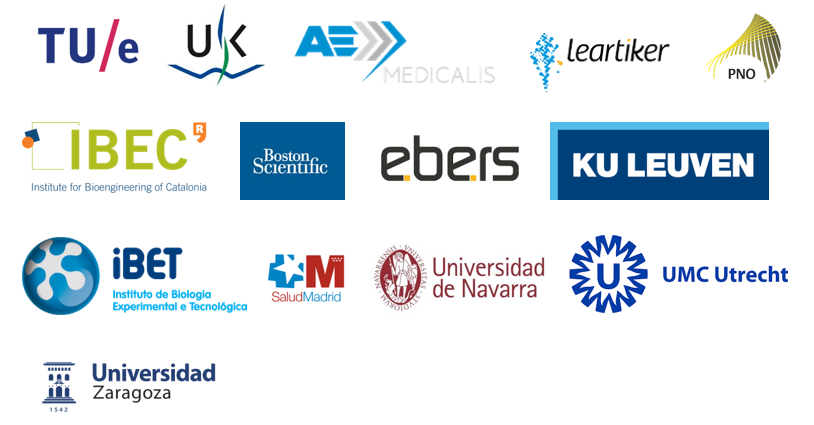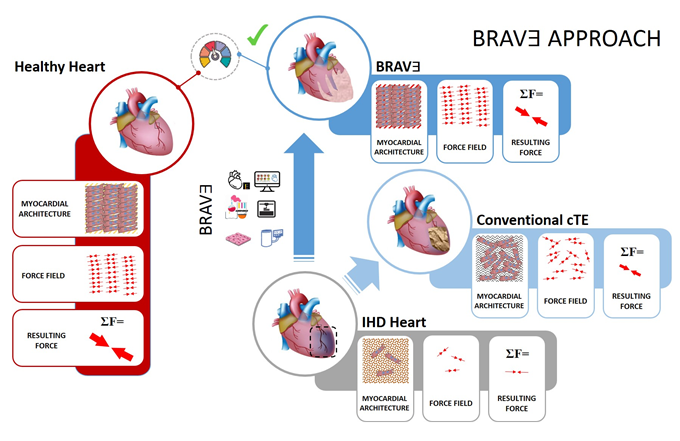- European union -
BRAVꓱ
COMPUTATIONAL BIOMECHANICS AND BIOENGINEERING 3D PRINTING TO DEVELOP A PERSONALISED REGENERATIVE BIOLOGICAL VENTRICULAR ASSIST DEVICE TO PROVIDE LASTING FUNCTIONAL SUPPORT TO DAMAGED HEARTS (G.A. no 874827) RIA – Research and Innovation action
Computational biomechanics and bioengineering 3D printing to develop a personalised regenerative biological ventricular assist device to provide lasting functional support to damaged hearts.
The BRAVꓱ project aims to develop a regenerative treatment for ischemic heart disease (IHD): an innovative biological ventricular assist device (BioVAD). It is a scaffold that is disposed over the injured area and helps the cardiac cells to make the contraction force needed for an adequate pumping. BRAVꓱ will develop a tailored structure that will be seeded with human induced pluripotent stem cells (hiPSCs), creating cardiac tissue that will be integrated in the patient’s heart.
This approach aims to replace current ventricular assist devices (VADs) to provide temporal functional support to damaged hearts but can’t replace the function of the lost cardiac muscle.
As IHD is the leading single cause of death in the European Union, this approach aims to improve the patient’s quality of life with a single intervention.
BRAV∃ brings together 14 different partners from six member states of the European Union. In line with the multidisciplinary spirit of the project, the consortium includes three university hospitals, four universities, three technological research centres, three SMEs, an international company.

- EUROPEAN UNION -
BRAVꓱ
COMPUTATIONAL BIOMECHANICS AND BIOENGINEERING 3D PRINTING TO DEVELOP A PERSONALISED REGENERATIVE BIOLOGICAL VENTRICULAR ASSIST DEVICE TO PROVIDE LASTING FUNCTIONAL SUPPORT TO DAMAGED HEARTS (G.A. no 874827) RIA – Research and Innovation action
3D printing to restore a damaged heart
Ischemic heart disease (coronary artery disease) is the leading single cause of death in Europe. Biomedical researchers are seeking solutions in self-repairing mechanisms of tissues or organs. However, the most promising solution lies in advancements in cell reprogramming, biomaterials or 3D printing combined with the profound study of myocardial physiology. The EU-funded BRAV3 project will develop a lasting biological device able to pump alongside a damaged heart through the engineering of a regenerative tissue with the use of biomaterials, stem cells and advanced computational modelling with 3D printable designs. By developing biological ventricular assist devices (BioVADs), BRAV3 will bring a quantum leap in regenerative medicine and its translation towards the clinic, as well as impact the development of novel medical technologies whilst greatly advancing our knowledge on human heart development.

